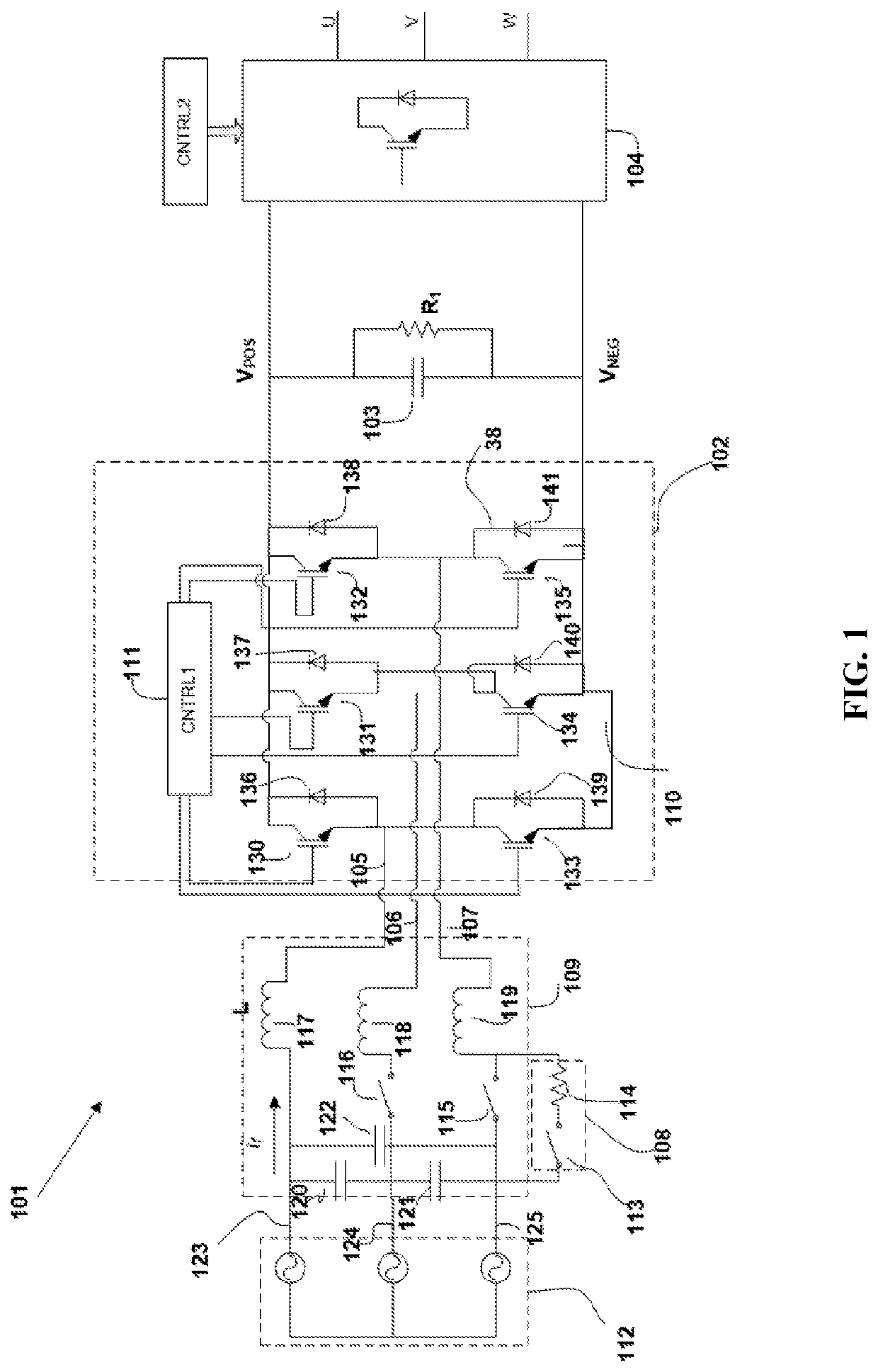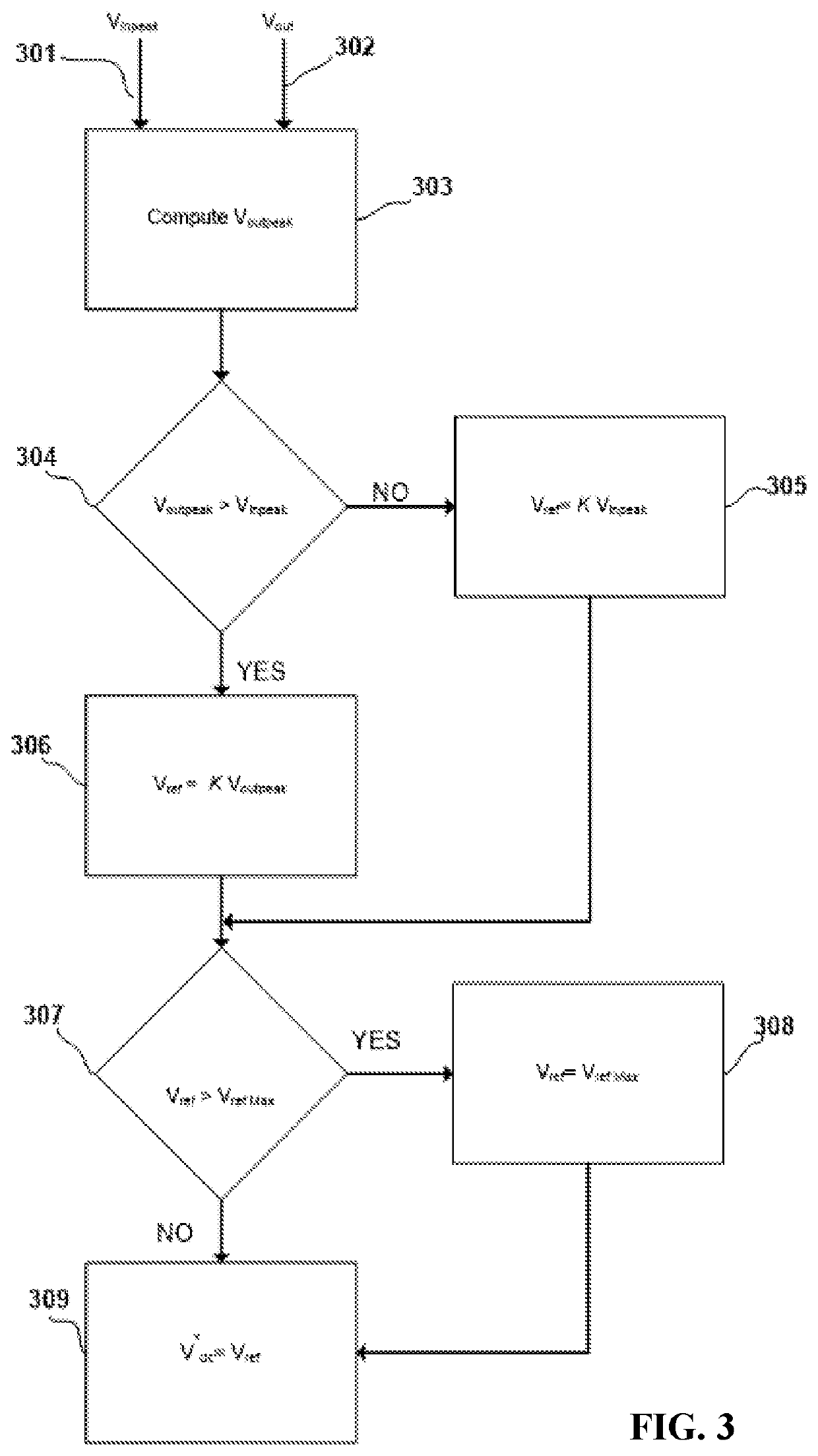Voltage doubling variable frequency drive
- Summary
- Abstract
- Description
- Claims
- Application Information
AI Technical Summary
Benefits of technology
Problems solved by technology
Method used
Image
Examples
Embodiment Construction
[0021]Referring to FIG. 1, a regenerative variable frequency drive 101, embodying the features of the present invention, includes an active converter 102, a DC bus 103 connects to the converter 102, and inverter 104 connected to the DC bus 103. The converter 102 includes first, second, and input lines 105, 106 and 107, a precharging circuit 108, an input filter 109, an active rectifier 102 and a controller 111. The first, second and third input lines 105, 106 and 107 connect to a three-phase AC source 112. Generally, source 112 will be a utility power grid. In the United States, the source 112 will typically provide power at 240V at 60 Hz.
[0022]The precharging circuit 108 connects along the second and third input line 106, 107 and includes a relay switch 113 connected in series to a resistor 114, and a contactor switches 115 and 116 connected in parallel to the relay switch 113 and the resistor 114. During startup of the drive 101, the relay switch 113 is closed, and the contactor s...
PUM
 Login to View More
Login to View More Abstract
Description
Claims
Application Information
 Login to View More
Login to View More - R&D
- Intellectual Property
- Life Sciences
- Materials
- Tech Scout
- Unparalleled Data Quality
- Higher Quality Content
- 60% Fewer Hallucinations
Browse by: Latest US Patents, China's latest patents, Technical Efficacy Thesaurus, Application Domain, Technology Topic, Popular Technical Reports.
© 2025 PatSnap. All rights reserved.Legal|Privacy policy|Modern Slavery Act Transparency Statement|Sitemap|About US| Contact US: help@patsnap.com



